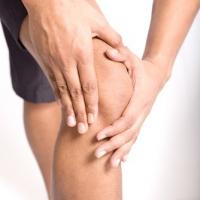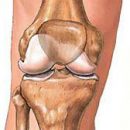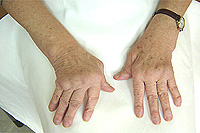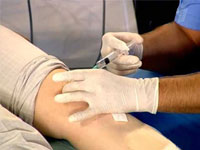What is chronic synotic? How does this disease manifest? Answers to these questions you will find in the article.
Content
 Chronic purely serous forms of traumatic synovitis are relatively rare. In the initial period of chronic serous synovitis, clinical manifestations are weakly expressed. Patients complain of fast fatigue, fatigue when walking, a slight limitation of movements in the patient joint, the presence of butter. In the articular cavity, abundant payments are accumulated, the so-called hydraulic joint (hydraartrosis) is developing, with a long existence of which tensile tensions of the joint occurs, which leads to its breaking, sublink and even dislocation.
Chronic purely serous forms of traumatic synovitis are relatively rare. In the initial period of chronic serous synovitis, clinical manifestations are weakly expressed. Patients complain of fast fatigue, fatigue when walking, a slight limitation of movements in the patient joint, the presence of butter. In the articular cavity, abundant payments are accumulated, the so-called hydraulic joint (hydraartrosis) is developing, with a long existence of which tensile tensions of the joint occurs, which leads to its breaking, sublink and even dislocation.
In most cases, mixed types are observed: chronic serous fibrino-shaped, chronic vile and vilisa-hemorrhagic.
In case of chronic serous fibrinoid synotion or serous fibrous synotte (more often occurs as a result of repeated hemorrhage) in the exudate a lot of fibrin, which dropped in the form of individual threads and clots, which, compacting, form free intra-articular bodies.
For chronic puffy synovitis, the presence of hypertrophied and sclerosic villings, which can be taken off with the formation of so-called rice calves and chondromic bodies.
In chronic forms of synovitis, the growth of pathological changes and clinical manifestations of the disease is caused not so much the duration of the inflammatory process, how much disruption of blood and lymph circulation in the joint capsule as a result of its fibrous rebirth.
The diagnosis of chronic serous synovitis does not represent significant difficulties, but it is not easy to find out the cause of the disease. In any case, the synotion as an independent nosological form is extremely rare. When studying the pathogenesis of synovitis, a large diagnostic value, in addition to clinical symptoms, has a study of the Point. It has been established that the synovial liquid of patients is always sterile and, being freshly meant, has the same protective properties as blood plasma. With laboratory analysis, you must pay attention to the color, transparency, synovy viscosity; With a microscopic examination, it is important to know the number and composition of cells, salts crystals, bacteria, etc. The biochemical study of the synovial fluid usually allows you to detect the violation of the permeability of the vessels and the synovial shell. Protein concentration is a membrane insight. The amount of it during aseptic traumatic synotion ranges from 3 to 7.8 g. In the acute period due to the increased permeability of the vessels, the level of protein is twice as much as normal indicators, mainly due to globulin. So, for example, the number of albumin in the normal synovial fluid is 72%, and after injury and operation up to 45%.
The change in permeability leads to a violation of metabolic processes in the synovial shell and synovial fluid, the amount of hyaluronic acid, which increases the viscosity of synovia, is sharply reduced. Therefore, when synoting viscosity fluctuates in fairly low limits (from 0.8 to 32 units). The reason for increasing the permeability of the intercellular membrane during chronic traumatic synotation is the increased activity of lysosomal and muscolitic enzymes (lysozyme, hyaluronidase, chondroitinprotein), which cause depolarization and decrease in hyaluronic acid concentration. According to the latest data, these enzymes are localized in synovial cells, macrophages, fibrocytes, etc. The enzymes released as a result of injury in turn act on the main substance, causing its disorganization and increased permeability of membranes; Thus, a closed vicious circle occurs, to break which is very difficult without appropriate treatment. That is why chronic synotic without proper early treatment can lead to the destruction of the coating cartilage and the development of deforming arthrome.
Thus, in the clinical picture of chronic post-traumatic synovitis, dominant symptoms should be allocated: the accumulation of the joint, the pain whose intensity depends on the nature of the injury and the number of traffic; infiltration and induration of the joint capsule; violation of the limb function, its neuromuscular apparatus and blood supply, taking into account the activity of the inflammatory process in the joint; The second time of the inferiority of the capsulation and ligament and the associated instability of the knee joint. All specified symptoms are usually due to a specific pathological substrate, which is a starting mechanism and subsequent - chronic stimulus of the synovial shell.
In a comprehensive examination of patients in order to clarify factors supporting chronic inflammation of the synovial shell, the most informative should be considered, in addition to clinical manifestations, the results of arthropneumography, arthroscopy, biopsy and cytology data, as well as the study of synovial fluid.









